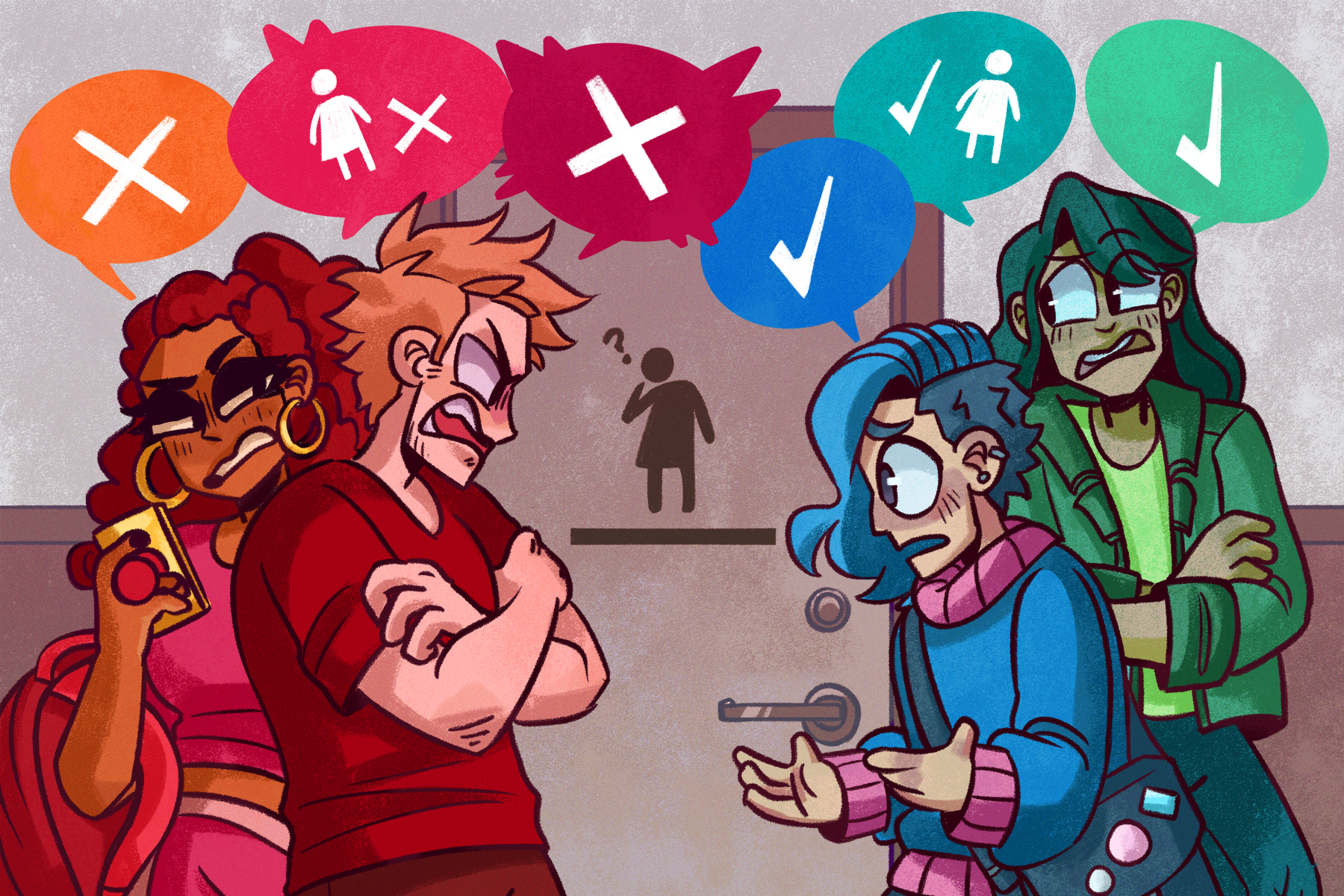Gender-neutral bathrooms in public places have been a controversial topic for years. Countless people can agree that bathrooms in schools are a necessity, yet not everyone can agree on adding gender-neutral bathrooms to college campuses. Several colleges have begun to incorporate gender-neutral bathrooms on their school grounds, and while others have yet to acknowledge their importance, numerous students continue to wait for the establishment of such facilities on their own campuses. Universities might not realize the impact such a minor change could have on their students, but, in reality, they are of significant importance to their student body.
Gender-neutral bathrooms provide a safe space for their students. All students, regardless of gender, need a comfortable space to use the restroom. The bathroom is the place where people feel their most vulnerable, which is why it’s crucial that students have access to a bathroom. Transgender and gender-nonconforming students lack this sense of security. Oftentimes, a transgender student will attempt to use the bathroom of the gender they identify with and be harassed or even beaten. This lack of security forces them to leave campus and find restrooms elsewhere. Some may argue that they could always use the restroom corresponding to the gender they were assigned to at birth, but this holds an equal risk and often results in the same outcomes. Providing gender-neutral bathrooms for students would allow them to stay on campus and feel safe.
Gender-nonconforming students also face the discomfort of feeling excluded from the bathrooms on their campuses. Like transgender students, they do not have access to a safe bathroom to relieve themselves. Gender-nonconforming students do not identify with a binary gender, therefore they do not identify with a binary bathroom. Similar to transgender students, they too often leave campus to use the bathroom. Providing a gender-neutral bathroom would allow them to stay on campus longer, and finally have facilities they feel comfortable in.
Being forced to leave campus to use the bathroom causes more harm than just a heavy bladder; being excluded from something as simple as a bathroom can spark dysphoria in transgender and gender-nonconforming students. Gender dysphoria takes a toll on these students’ mental health and feeling excluded from something as simple as a bathroom can severely trigger these emotions. Cisgender students and faculty cannot relate to the feelings of being shunned from the gender you identify with or being forced into the one assigned to you at birth. Incorporating gender-neutral bathrooms on campuses allows students to feel included with everyone and feel safe in a space provided for all genders.
Certain people may argue that the addition of gender-neutral bathrooms is a mistake and a safety risk for cisgender students. Some individuals insist that they could be attacked or harmed by other students who are “pretending” to be transgender; however, transgender students have never been known to cause harm to others in the bathrooms they choose. The gender-neutral bathrooms do not provide any safety risks to their students; in reality, they do the exact opposite by eliminating safety risks transgender students could be exposed to in binary restrooms. Cisgender students will still have their binary bathrooms to frequent; the addition of a gender-neutral bathroom for other students does not affect them if they choose not to use it. Of course, this is not the issue for all cisgender students. Many have no problem sharing a bathroom with transgender and gender-nonconforming students and are perfectly fine with sharing the bathroom with cisgender students of the opposite gender.
The students who fear that the inclusion of gender-neutral bathrooms could pose a threat to them and their safety should look at the bigger picture. These aren’t criminals or strangers; they are their fellow classmates — classmates that crave the same comfort and deserve the same right to a bathroom as they do. These students don’t want to harm other students or take away their safe spaces. They want to feel included and have a safe space for themselves as well. Gender-neutral bathrooms are meant to be inclusive spaces for all students, not facilities for the exclusive use of cisgender students.
Colleges looking to add gender-neutral bathrooms to their campuses will see it’s quite effortless. Ann Forman Lippens of EAB discusses five lessons learned from the University of California about handling the physical and social changes for the campus:
Lesson 1 states, “Converting existing single-occupancy restrooms is the most cost-effective solution.” Because these bathrooms are usually underfunded, simply changing the sign to read “gender-neutral bathroom” can provide a sense of inclusivity for transgender and gender-nonconforming students at a lower cost.
Lesson 2 includes, “Deciding how to indicate gender-inclusive restrooms is a more important decision than you might think.” She states here that the wording of these bathroom signs is quite important for the inclusivity of transgender and gender-nonconforming students. Simply putting the word “bathroom” makes it more like an at-home bathroom rather than a gender-inclusive bathroom.
Lesson 3 states, “Ensure gender-inclusive restrooms are distributed evenly across campus.” Simply adding a gender-neutral bathroom on one side of campus and not the other defeats the purpose. Students still have to trek to use the bathroom if it is on the other side of the school grounds. Moreover, throwing these bathrooms off to the side makes students feel unrepresented or unincluded because they will still lack the same access to bathrooms as other students.
Lesson 4 warns, “Converting gendered restrooms into gender-inclusive ones may affect compliance with laws and building codes.” She explains that it is important to take note of the institution’s guidelines and building codes to ensure that the right bathrooms can be converted or built into gender-neutral ones; otherwise, they risk closure.
And lastly, lesson 5: “Consider student privacy when making multi-stall restrooms gender-inclusive.” Arguably the most important lesson, this ensures that all students feel safe and secure while using the restrooms. For multi-use gender-neutral restrooms, many schools are choosing to provide floor-to-ceiling stall doors to allow privacy for all students using them.
Gender-neutral bathrooms allow cisgender, transgender and gender-nonconforming students to have a safe space and feel included. Although certain people still argue that the creation and inclusivity of these bathrooms pose an issue to schools and students’ safety, it actually creates a safe environment for all students that potential students will see and possibly entice them into enrolling in schools like these that care for the safety of their students and their right to a bathroom.

















